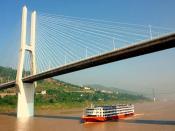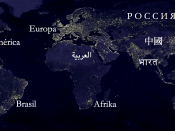Role Analysis of Regional Integration
Wikipedia, an internet encyclopedia source, defines globalization as "a social change, an increased connectivity among societies due to transculturation; the explosive evolution of transport and communication technologies to facilitate international cultural and economic exchange (Wikipedia, 2004)." In other words, globalization pertains to the connectivity that allows people and businesses around the world to interact in a seamless manner without hindrances such as geography and cultural differences. A major influence on moving towards a global economy has been progressive trend toward the use of regional economic integration agreements. According to the text, International Business: Competing in the Global Marketplace, regional economic integration is "the agreements among countries in a geographic region, such as Asia, to reduce, and ultimately remove, tariff and non-tariff barriers to the free flow of goods, services, and factors of production between each other (McGraw-Hill, 2002)." These agreements are being touted as not just promoting spurs in economic growth and development, but also as an influencer in negotiating peace amongst the various people in the regions as well as across the globe.
Asia, covering approx 17.139 million square miles is the world's largest continent. It's inhabitants also make it the most populous at 3.3 billion people or approximately three-fifths of the world's total population (Wikipedia, 2004). The culture and industries of Asia differ vastly thoroughout the various regions of the continent. Asia's economy lies primarily in agriculture. Asian countires with smaller populations such as Thailand and Vietnam are major expoters of agricultural crops such as rice, wheat, soybeans, tea, and other items. However, although producing some crops, countries with larger populations and access to power supplies, modernized transportation for people and goods, as well as access to raw materials such as lumber are more industrialized. For instance, due in part to Japanese...


